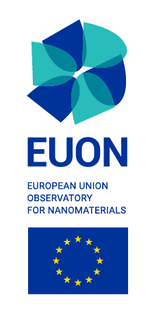
Nanotechnology, also shortened to nanotech, is the use of matter on an atomic, molecular, and supramolecular scale for industrial purposes. The earliest, widespread description of nanotechnology referred to the particular technological goal of precisely manipulating atoms and molecules for fabrication of macroscale products, also now referred to as molecular nanotechnology. A more generalized description of nanotechnology was subsequently established by the National Nanotechnology Initiative, which defined nanotechnology as the manipulation of matter with at least one dimension sized from 1 to 100 nanometers. This definition reflects the fact that quantum mechanical effects are important at this quantum-realm scale, and so the definition shifted from a particular technological goal to a research category inclusive of all types of research and technologies that deal with the special properties of matter which occur below the given size threshold. It is therefore common to see the plural form "nanotechnologies" as well as "nanoscale technologies" to refer to the broad range of research and applications whose common trait is size.

Environmental protection is the practice of protecting the natural environment by individuals, organizations and governments. Its objectives are to conserve natural resources and the existing natural environment and, where possible, to repair damage and reverse trends.

Occupational hygiene is the anticipation, recognition, evaluation, control, and confirmation of protection from hazards at work that may result in injury, illness, or affect the well being of workers. These hazards or stressors are typically divided into the categories biological, chemical, physical, ergonomic and psychosocial. The risk of a health effect from a given stressor is a function of the hazard multiplied by the exposure to the individual or group. For chemicals, the hazard can be understood by the dose response profile most often based on toxicological studies or models. Occupational hygienists work closely with toxicologists for understanding chemical hazards, physicists for physical hazards, and physicians and microbiologists for biological hazards. Environmental and occupational hygienists are considered experts in exposure science and exposure risk management. Depending on an individual's type of job, a hygienist will apply their exposure science expertise for the protection of workers, consumers and/or communities.
Environment (E), health (H) and safety (S),EHS is an acronym for the set that studies and implements the practical aspects of protecting the environment and maintaining health and safety at occupation. In simple terms it is what organizations must do to make sure that their activities do not cause harm to anyone. Commonly, quality - quality assurance and quality control - is adjoined to form the company division known as HSQE.
The impact of nanotechnology extends from its medical, ethical, mental, legal and environmental applications, to fields such as engineering, biology, chemistry, computing, materials science, and communications.
Nanotoxicology is the study of the toxicity of nanomaterials. Because of quantum size effects and large surface area to volume ratio, nanomaterials have unique properties compared with their larger counterparts that affect their toxicity. Of the possible hazards, inhalation exposure appears to present the most concern, with animal studies showing pulmonary effects such as inflammation, fibrosis, and carcinogenicity for some nanomaterials. Skin contact and ingestion exposure are also a concern.

The Project on Emerging Nanotechnologies was established in 2005 as a partnership between the Woodrow Wilson International Center for Scholars and the Pew Charitable Trusts. The Project was intended to address the social, political, and public safety aspects of nanotechnology. It intended in particular to look for research and policy gaps and opportunities in knowledge and regulatory processes, and to develop strategies for closing them. The project worked with multiple U.S. and foreign governments and organizations.
Green nanotechnology refers to the use of nanotechnology to enhance the environmental sustainability of processes producing negative externalities. It also refers to the use of the products of nanotechnology to enhance sustainability. It includes making green nano-products and using nano-products in support of sustainability.
Because of the ongoing controversy on the implications of nanotechnology, there is significant debate concerning whether nanotechnology or nanotechnology-based products merit special government regulation. This mainly relates to when to assess new substances prior to their release into the market, community and environment.

The International Organization for Standardization defines Engineered Nanomaterials, or ENMS, as materials with external dimensions between 1 and 100nm, the nanoscale, or having an internal surface structure at these dimensions. Nanoparticles can be both incidental and engineered. Incidental nanoparticles include particles from dust storms, volcanic eruptions, forest fires, and ocean water evaporation. Engineered nanoparticles (EMMs) are nanoparticles that are made for use in cosmetics or pharmaceuticals like ZnO and TiO2. They are also found from sources such as cigarette smoke and building demolition. Engineered nanoparticles have become increasingly important for many applications in consumer and industrial products, which has resulted in an increased presence in the environment. This proliferation has instigated a growing body of research into the effects of nanoparticles in the environment.
The societal impact of nanotechnology are the potential benefits and challenges that the introduction of novel nanotechnological devices and materials may hold for society and human interaction. The term is sometimes expanded to also include nanotechnology's health and environmental impact, but this article will only consider the social and political impact of nanotechnology.
The ISO/TS 80004 series of standards, from the International Organization for Standardization, describe vocabulary for nanotechnology and its applications. These were largely motivated by health, safety and environment concerns, many of them originally elaborated by Eric Drexler in his 1985 Engines of Creation and echoed in more recent research. The ISO standards simply describe vocabulary or terminology by which a number of critical discussions between members of various stakeholder communities, including the public and political leaders, can begin. Drexler, in Chapter 15 of his 1985 work, explained how such consultation and the evolution of new social media and mechanisms to make objective scientific determinations regardless of political and industrial and public pressures, would be important to the evolution of the field. Nonetheless, it took a quarter-century for the ISO to agree and eventually standardize on this terminology.

Omowunmi "Wunmi" A. Sadik is a Nigerian professor, chemist, and inventor working at Binghamton University. She has developed microelectrode biosensors for detection of drugs and explosives and is working on the development of technologies for recycling metal ions from waste, for use in environmental and industrial applications. In 2012, Sadik co-founded the non-profit Sustainable Nanotechnology Organization.
Engineering controls are strategies designed to protect workers from hazardous conditions by placing a barrier between the worker and the hazard or by removing a hazardous substance through air ventilation. Engineering controls involve a physical change to the workplace itself, rather than relying on workers' behavior or requiring workers to wear protective clothing.

Titanium dioxide nanoparticles, also called ultrafine titanium dioxide or nanocrystalline titanium dioxide or microcrystalline titanium dioxide, are particles of titanium dioxide with diameters less than 100 nm. Ultrafine TiO2 is used in sunscreens due to its ability to block ultraviolet radiation while remaining transparent on the skin. It is in rutile crystal structure and coated with silica or/and alumina to prevent photocatalytic phenomena. The health risks of ultrafine TiO2 from dermal exposure on intact skin are considered extremely low, and it is considered safer than other substances used for ultraviolet protection.

Andrew David Maynard is an author, professor, and director of the Risk Innovation Lab at the School for the Future of Innovation in Society (SFIS) at Arizona State University (ASU). Maynard was previously the director of the University of Michigan Risk Science Center and served as Science Advisor to the Project on Emerging Nanotechnologies at the Woodrow Wilson International Center for Scholars. His work focuses on the socially responsive and responsible development of emerging and converging technologies.

The European Union Observatory for Nanomaterials (EUON) is an initiative that aims to increase the transparency and availability of information on nanomaterials to the general public. It was launched in June 2017.
Nanoinformatics is the application of informatics to nanotechnology. It is an interdisciplinary field that develops methods and software tools for understanding nanomaterials, their properties, and their interactions with biological entities, and using that information more efficiently. It differs from cheminformatics in that nanomaterials usually involve nonuniform collections of particles that have distributions of physical properties that must be specified. The nanoinformatics infrastructure includes ontologies for nanomaterials, file formats, and data repositories.

Nanotechnology in warfare is a branch of nano-science in which molecular systems are designed, produced and created to fit a nano-scale (1-100 nm). The application of such technology, specifically in the area of warfare and defence, has paved the way for future research in the context of weaponisation. Nanotechnology unites a variety of scientific fields including material science, chemistry, physics, biology and engineering.









